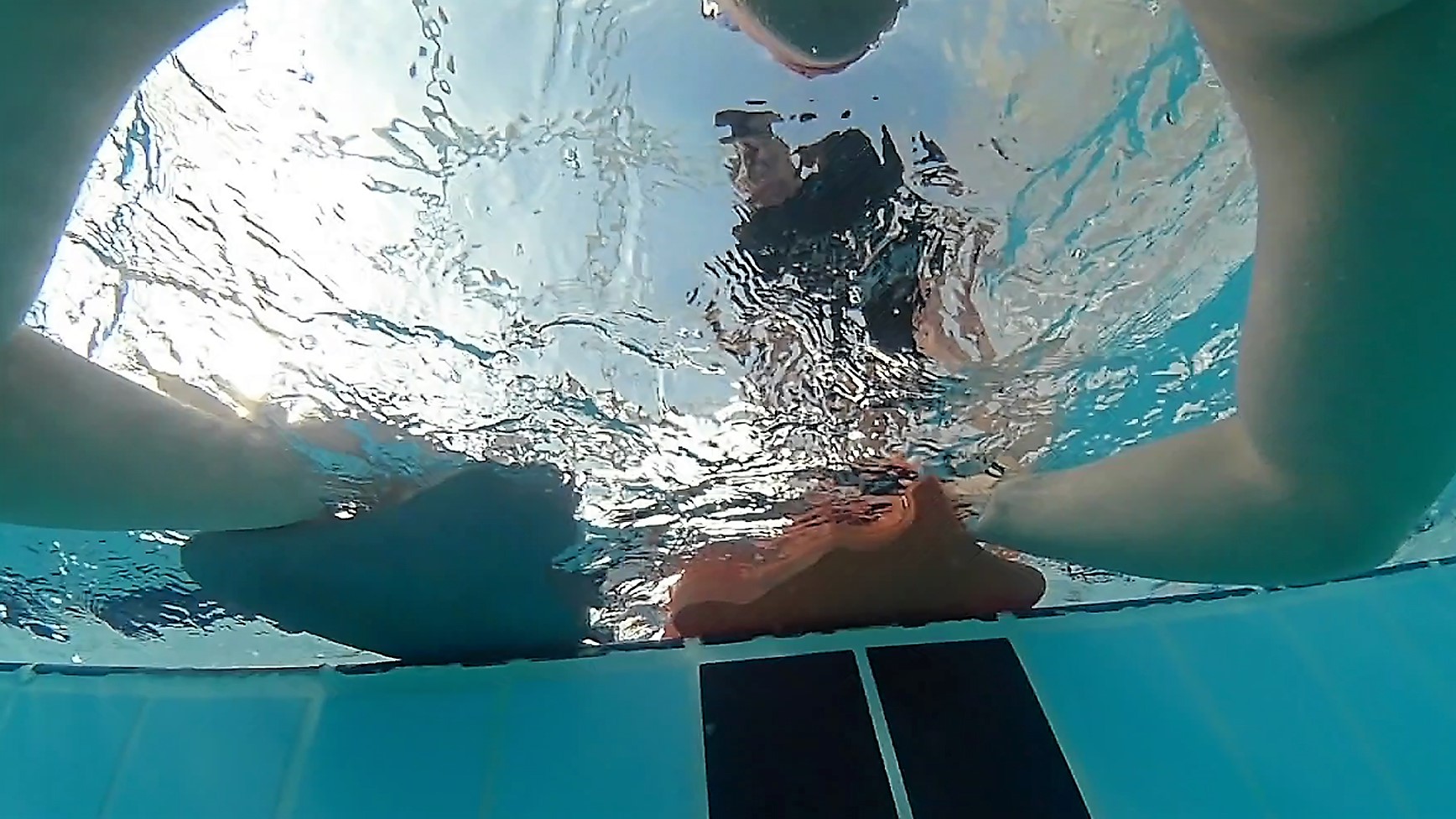The sensory filters
Only 1% of the information that reaches our senses is accepted and stored in our brain. Regarding this information, only waves and chemicals are capable of producing stimuli. Electromagnetic waves (sight), pressure waves (sound, touch, etc.) thermal waves (epithelial receptors), as well as chemical substances (smell and taste), are the only receiving pathways. At the same time, not all stimuli go through them. For example, we cannot see infrared or ultraviolet beams.
Another great filter, and this one is specially interesting, is the sense’s ability to perceive stimulus variations. A constant stimulus is coded as null or non-existent due to the adaptive capacity of sensory receivers. This fact is evident in many swimming intervals, ceasing to apply force at key moments because of the adaptation and the Nervous System's lack of attention. In addition, each individual processes the information received, permeating it in more or less extent in the form of emotions, which many of them will be transformed into feelings. Despite having language as the main medium of transmitting information from one brain to another (coach to athlete), when transmitting emotions, it is not really effective.
Here is where we find communication. We are used to understand that language is the principal communication method to connect concepts with words, allowing us to share thoughts, feelings, experiences and sensations (conceptualizations of emotions), and also provides us with knowledge, customs and values. But that is incorrect, since the usual communication of verbal language only contributes to 7% of the total information. The remaining 93% is non-verbal, without words. In this non-verbality we find the tone of the voice with 38% of the participation. Sight (eye movements, facial expressions, body movements, postures, etc.) with 55%. The rest of the senses complement the process: taste, smell and touch. In other words, the emotions registered in the form of feelings are produced by the various sources of stimuli already mentioned.
The instructions that we use to install a high technical level in our swimmers and triathletes must be very careful and use the different channels, some more than others, and with the necessary transversality that ensures us to connect with them. Each one has a reference system, unconscious, and by which visual, auditory and proprioceptive stimulus (inner sensations) are mainly captured. This makes that each swimmer or triathlete perceive a certain type of information more easily. There are athletes who perceive visual stimuli before, others auditory stimuli, others internal sensations…
Another very important filter for the learning process is the swimmers’ attitude regarding the stimuli they receive. The person’s attitude is constructed from their perceptive capacities to the experiences they have lived. These experiences generate internal filters called "metaprograms", responsible for the beliefs that will build their criteria, which in turn will conform their values, resulting in the beacons that each person uses to lead their paths.
Continuing with the filtering process of external information, at this moment, we must take into account that only 10% of the data remains in the conscious memory, the rest being derived to the unconscious.
"Let’s ask one of our athletes how their legs were placed during a crawl turn and we will clearly see the percentage of the action awareness."
The integrated execution is crucial in the global gesture, while also being as specific as possible, because (here apply are conditions affecting the vast majority, namely the lack of time in the classes, etc.) if we spend too much time in non-specific exercises or implementing unprofitable materials, we will not achieve the potential effectiveness that we could develop and install.
Taking into account in this process, we find the phylogenetic factors, plantar supports, balance, head position, etc. In addition, the ontogenetic factors, genetic load and conditions during pregnancy, from echogenic to sociogenic factors also play an important role in the perception.
How many times have we seen brothers or sisters who would swim almost synchronously or clubmates who adopt the same motor patterns?
We must be very careful with this since the attention can be controlled unconsciously by mirror neurons and serve us very little in our eagerness to improve the working group.
Humans have three levels of attention. First of all, the sustained attention (alert-vigilance), located in the reticular substance. Secondly, the selective attention, by which we orient ourselves to relevant stimuli or inhibit irrelevant ones. And the third one, the divided attention, by which we can pay attention to two or more centers of attention. Attending to these capacities we will structure our training plan and they will be the foundation of our multi-technical series as the basic unit of training.
The ability to re-experience past emotions is one of the filters we must be careful to, because it can both help or damage our purposes. The coach or athelete evaluation should imply an analysis of the particular situation.
In this sense, the feedback must be used constantly, since the filters’ effect on the sensory organs, their sensors and their sensitivities, reshape their capacities. This takes placesbecause our brain sends information to the sensory organs, modified in function of the experience lived inside of it. The use of video cameras, observation by partners in addition to the coach, is key to enhance the perception and the new motor restructuring.
From the above it can be concluded that, while each perception is unique and individual, the series of perceptions carried out in common by different people can be related until they almost become identified. If we propose general work schemes with specific incidence in certain swimmers that need to reinforce vulnerable aspects of their style, although the perception will not be the same for each of them, the series in its entirety will be for both athletes practically the same. Therefore, a series of individual perceptions enables us to agree with others about what has been experienced, despite the individual experiences being slightly different, and take the group to the best possible technical-sports level.
J. Bonal Pedrón
Share this article




